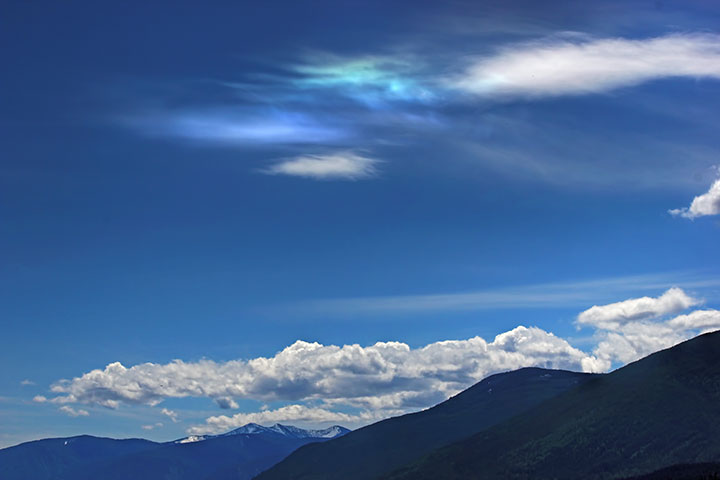We have entered the season of the circumhorizontal arc—one of the most brilliant and colourful of all the haloes. Indeed at its best, it outclasses the rainbow.
The circumhorizontal arc forms a horizontal line low in the sky, when the Sun is high in the sky. The solar elevation must be greater than 58°, although at that cutoff elevation the arc is so faint as to be of marginal visibility. The arc is at its best when the Sun is close to an elevation of 67°, at which time it can be truly spectacular. At significantly lower or higher solar elevations, quality deteriorates.
Unfortunately at the latitude of Kootenay Lake, the highest that the sun climbs at solstice noon is about 64°. So, the circumhorizontal arc will never be seen at its best, but nevertheless, can be quite good and very much worth observing.
I was reminded of all this midday Sunday while birding at Leach Lake (south end of Kootenay Lake): a so-so circumhorizontal arc appeared in the southern sky. My camera lens was equipped for distant birds, so Brian d’Eon obligingly took a picture for me (below).
Now, the picture does not show a well developed arc: the solar elevation is only 62°, and there is no cirrus in a position that would give colours other than blue. Nevertheless, it is clear that the season of the circumhorizontal arc is upon us. Over the next six week or so, I will watch for colourful cirrus low in the sky around solar midday (about 1 pm DST).
Blue cirrus was all that was seen. In the coming weeks with a higher Sun and more extensive cirrus, the circumhorizontal arc could become really nice.

Brian d’Eon’s picture is used with permission.

That’s so amazing! We saw the same kind of arc from just north of Oliver today but it was shades of green and blue… I was wondering what it was.